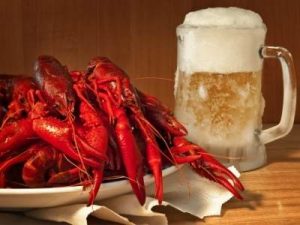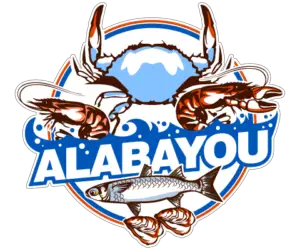I was born into the seafood industry, my family has been in some aspect of the seafood industry for over 100 years. People from all over will come and purchase seafood from family business in Bayou La Batre, Al.
I often get asked “just what crawfish are?”.
Crawfish, also known as crayfish, are freshwater crustaceans that resemble small lobsters. They are found in streams, rivers, and swamps in many parts of the world, including North America, Europe, and Australia. Crawfish are known for their distinctive appearance, with a hard exoskeleton, two large claws, and multiple legs.
Crawfish are popular as a food source and are often served boiled, fried, or in stews, soups, and other dishes. In some cultures, crawfish are considered a delicacy, and they are often enjoyed during festivals and other special events.
Crawfish, also known as crayfish or mudbugs, are freshwater crustaceans that belong to the family Astacidae. They are closely related to lobsters and are often referred to as “miniature lobsters.”
With their distinctive appearance and rich flavor, crawfish have become a popular food source in many parts of the world, particularly in the Southern United States.
In this blog post, we will explore the anatomy, habitats, and cultural significance of crawfish, as well as the many different ways they are enjoyed as a food.

Anatomy and Habitat of Crawfish
Crawfish have a hard exoskeleton that protects their delicate body and limbs. This exoskeleton is shed periodically as the crawfish grows, and a new one forms in its place.
The two largest appendages on a crawfish’s body are its claws, which are used for defense and foraging. Crawfish also have multiple legs, which they use to move through the water and to cling to rocks, plants, and other surfaces.
Crawfish are found in streams, rivers, and swamps in many parts of the world, including North America, Europe, and Australia.
They are most commonly found in areas with slow-moving water and abundant vegetation. They are nocturnal creatures and spend most of their time hiding in the mud, rocks, and plant roots along the bottom of the water.
Crawfish feed on a variety of aquatic and terrestrial plants, as well as smaller invertebrates and small fish.
They have a keen sense of smell and are able to detect food from a great distance. They are also opportunistic feeders and will eat whatever food is readily available to them.
Cultural Significance of Crawfish
In many cultures, crawfish are considered a delicacy and are often enjoyed during festivals and special events.
In the southern United States, crawfish boils are a popular way to celebrate the arrival of spring, and many communities hold annual crawfish festivals to celebrate this beloved crustacean.
During these events, crawfish are boiled in a large pot with spices, vegetables, and other seasonings, and served up in generous portions for all to enjoy.

Crawfish are also a staple food in Cajun cuisine, a style of cooking that originated in Louisiana.
In Cajun cooking, crawfish are often used in stews, soups, and étouffées, and are considered a signature ingredient in many dishes.
Cajun cuisine is known for its bold flavors and use of spices, and crawfish play an important role in adding richness and depth to these dishes.
Crawfish a Culinary Delight.
Crawfish are a popular food source in many parts of the world, and are enjoyed for their rich, sweet, and slightly nutty flavor. They are often boiled or fried, and are served as an appetizer or main course.
Boiled crawfish are typically served with corn on the cob, potatoes, and other vegetables, and are often accompanied by dipping sauces and other condiments.
If you want to learn how to boil crawfish check out our complete guide to boiling crawfish.
Fried crawfish, on the other hand, are often served as a standalone dish, and are often coated in a spicy batter before being deep-fried.

In addition to being boiled and fried, crawfish can also be used in a variety of other dishes, such as stews, soups, and étouffées. They can also be added to jambalayas, gumbos, and a variety of other dishes.
The tails of crawfish are often used as a main ingredient, while the heads can be used to make rich, flavorful broths and stocks.
Varieties of Crawfish
There are over 600 species of crawfish, each with their own unique features and habitats. Some of the most commonly known species include the red swamp crawfish, the white river crawfish, and the noble crayfish.
The red swamp crawfish is the most widely farmed species and is native to the southeastern United States. It is commonly used for human consumption and is often boiled and served as a delicacy in Cajun and Creole cuisine.
This species can grow up to 8 inches in length and has a reddish-brown color.
The white river crawfish is native to the White River in Arkansas and is also farmed for human consumption. It is characterized by its white to light-gray color and is known for its mild and sweet flavor.
Unlike the red swamp crawfish, the white river crawfish is not commonly used in traditional Cajun and Creole dishes.
The noble crayfish is native to Europe and is considered a threatened species. This species is known for its large size, with some individuals growing up to 8 inches in length.
The noble crayfish has a distinctive greenish-brown color and is highly valued for its meat, which is considered to be of high quality and is used in various European dishes.

In addition to the aforementioned species, there are many other species of crawfish that are native to different regions of the world.
These species vary in size, color, and flavor, and each has its own unique habitat and adaptations to survive in its environment.
In conclusion, the variety of crawfish species is quite diverse and each species has its own unique features and habitats.
From the widely farmed red swamp crawfish to the threatened noble crayfish, crawfish are an important part of freshwater ecosystems and are valued for their meat and other contributions to human cuisine.
Conclusion
Crawfish are an amazing and delicious freshwater crustacean that has become an important part of many cultural traditions and cuisine.
With their distinctive appearance, rich flavor, and versatility, it’s easy to see why they have become so beloved by people all over the world.
Whether enjoyed boiled, fried, or in a variety of other dishes, crawfish are sure to add a touch of excitement and flavor to any meal.

Whether you’re a seasoned crawfish aficionado or a newcomer to this delicious crustacean, there is something for everyone to enjoy when it comes to crawfish.
So the next time you have the chance, give these miniature lobsters a try, and see for yourself why they have become one of the greatest food traditions in the world.
